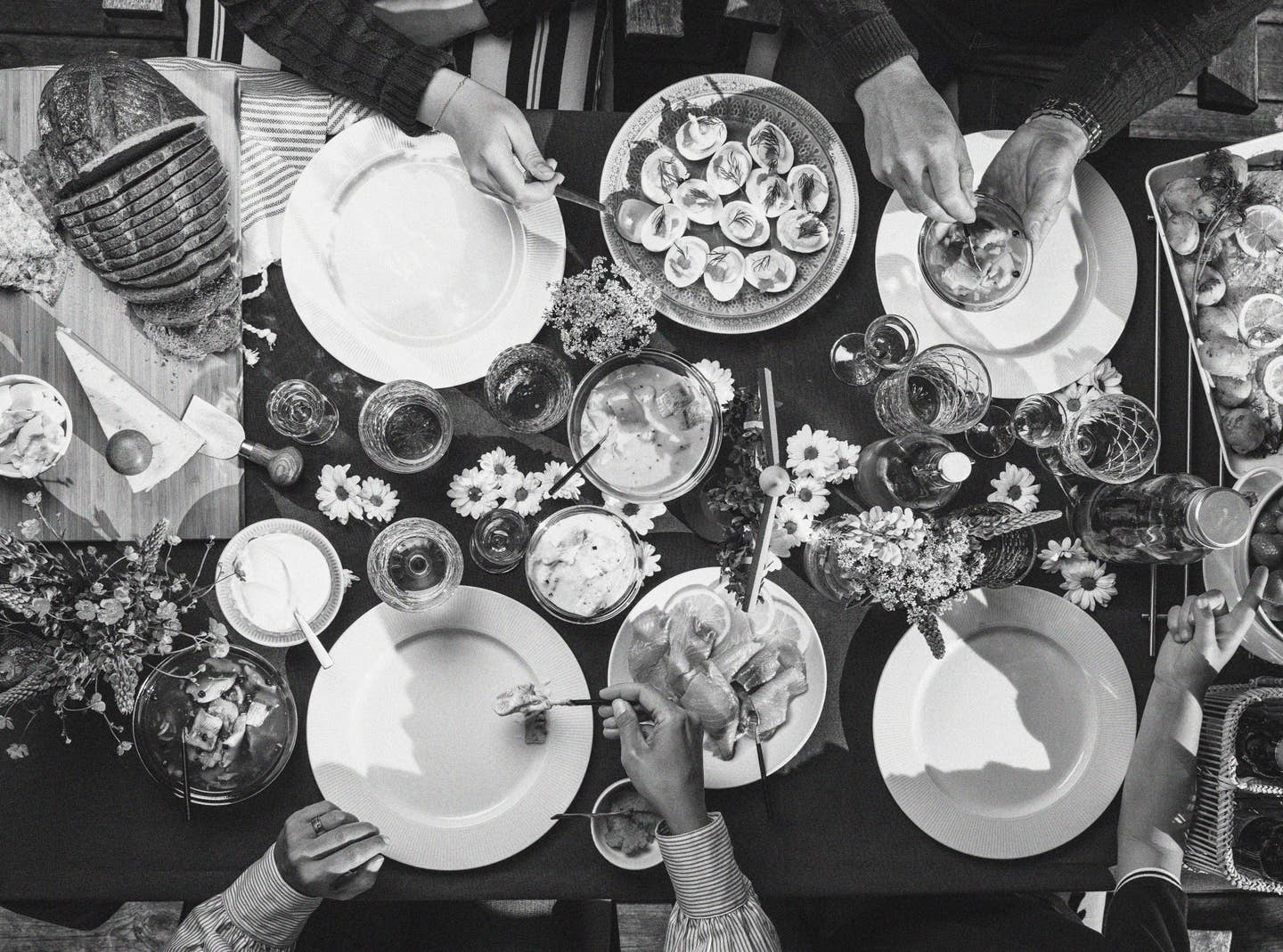
Swedes Feed Their Guests—They Just Have a Different Take on Hospitality
A Stockholm writer on everything you need to know about #Swedengate.
Sweden has a PR problem, and it has nothing to do with NATO membership or Russian disinformation. This week the internet woke up to #Swedengate, a Reddit post-turned-tweetstorm about Swedes not feeding their houseguests.
According to the post, a Swedish child visiting a friend’s house was asked to stay upstairs while the family sat down to dinner—a situation deemed normal by many Swedish commenters. This, in turn, elicited a pile-on by “food-is-love” believers who couldn’t wrap their minds around not feeding any houseguest, let alone a child who’s over for a playdate.
The anecdote called into question the commonly held utopian vision of Sweden as a happy, highly functional, tightly knit society backed by a potent welfare state. How could this cultural model justify denying a kid dinner, and what did that say about Swedish values? It turns out, it says a lot—just maybe not what you think.
To an outsider, Sweden has eccentric cultural mores when it comes to mealtime, a fact that became apparent shortly after I moved here in 2001. A few Swedes had invited me over for dinner, and as everybody was spooning up the last of the bolognese, the host passed around a cup. Each guest deposited 20 kronor ($3) apiece to cover the cost of the meal—a shocker to me, an Asian American who had always footed the bill for my own dinner parties.
Swedish students, I later learned, live off a modest government stipend. University tuition is free, but food in Sweden is expensive—so expensive, in fact, that a Swedish student famously came down with scurvy after eating only pasta for months. For college kids who want to break bread together, pooling resources makes sense.
That night, it dawned on me that Swedish food culture went much, much deeper than meatballs, lingonberries, and fika (the afternoon coffee-and-pastry tradition Americans are just starting to appreciate). I assimilated quickly—and even started to admire this unfamiliar philosophy around entertaining. It seemed fairer and more inclusive. But what does pooling money have to do with that hungry kid?
To Swedes, feeding a visiting child without running it by the parents could be seen as inconsiderate—it throws things out of order. In the case of the Reddit poster, surely a hot dinner was waiting for them at home, a dinner that was budgeted for in both money and time. “A lot of Minnesotanss of Nordic descent are also very Swedish about this too,” my Swedish American friend Kristin told me. “We've even packed lunch for our kids to eat at the neighbors’ from time to time.”
One could argue that such unwritten rules make life in Sweden (and perhaps the American Midwest) run more smoothly—and why hell breaks loose at communal laundry rooms when someone cuts the line.
But Twitter is not a place for nuance. An uninformed online army accused the hosting parents of being inhospitable, vengeful Vikings. Indeed, by the time the first thoughtful explanations made the rounds, we were firmly entrenched in Midsommar (the horror movie, not the festival) territory in the world’s woebegone child-starving imagination.
Admittedly, I also took the bait. When I tweeted tongue in cheek that, in contrast to Swedes, food is Asians’ love language (hence my family’s tradition of force-feeding guests to the point of discomfort), Swedish food writer Margit Richert countered, “Food is the universal love language, even in Sweden, although not as much as in most other countries.”
Her comment made me ask myself whether there actually was a certain “food stinginess” in Swedish culture. If so, I hadn’t experienced it. My former in-laws invited us to frequent sit-down dinners, where I’d feast on locally hunted roast venison with wild mushroom gravy and mashed potatoes until I cried for mercy.
Generous, over-the-top eating happens at the national level as well—again, generally potluck style. There’s Midsummer’s Eve, a whole day and night spent jumping around like a frog between platters of gravlax and new potatoes. Then come the crayfish parties every autumn, which bring people together around boiled crustaceans and shots of BYOB Swedish vodka. At a traditional glögg (mulled wine party), the host usually provides all of the mulled wine, plus saffron buns galore.
My friend Diana likes to invite me to her country house for Midsummer’s Eve. Yes, I’m tasked with bringing Västerbotten cheese pies for a crowd, but it’s a small price to pay for all the flower crowns, soaks in the sauna, vickning (late-night hotdogs and chips), cots to crash on, and enough instant coffee to cure the next day’s hangover.
If Swedish hospitality can teach us one thing, it’s that order, food, and friendship go hand in hand. If each person does their part, those parts can combine to make something far greater—and more equitable.
The framing of Swedengate, then, is all wrong: Swedes do feed other Swedes. They just don’t like surprises. In fact, they’ll happily ply you with funky-smelling specialties like lutfisk (fish preserved in lye) and surströmming (fermented herring), which might have you running for the door, saying, “I’m sorry I can’t stay—my parents are calling me home for dinner!”
Keep Reading
Continue to Next Story










